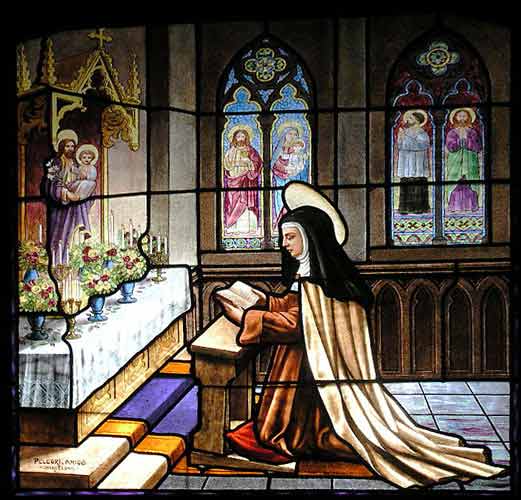
Teresa of Ávila wrote these words on a bookmark she kept in her breviary:
Let nothing disturb you;
Nothing frighten you.
All things are passing.
God never changes.
Patience obtains all things.
Nothing is wanting to him who possesses God.
God alone suffices.St. Teresa was determined to reach the heights of holiness. Yet at the same time she was realistic, based on her own experience and those of the nuns under her care as head of the Discalced Carmelite Order. Put these two characteristics together, and you have one of the wisest guides to the spiritual life. Let’s take a closer look at her advice.
Perseverance is a key to success Remember the parable Jesus told about the persistent widow (Luke 18:1-8)? We must never give up praying when it seems God is not hearing us. Teresa advised her sisters to apply this lesson to growth in prayer.
… I say that it is very important – it is everything to have a strong and firm resolution, not to stop till we arrive at the water [union with God], come what may, or whatever may be the consequence, or whatever it may cost us. No matter who complains, whether I reach there or die on the way, or have not courage to endure the troubles which I may meet with, or though the world should sink under us… (Way of Perfection, Chapter XXI)It’s easy to get discouraged in prayer. Seeing no measurable growth in intimacy with God, we might be tempted to give up. We might wish to say along with the doubters in the end times, “Where is this coming He promised?” (2 Peter 3:4). Don’t!
Continue reading at Contemplative Homeschool.

